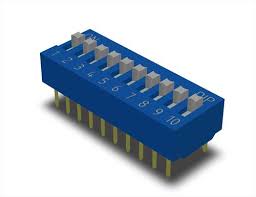Preface: Mark Saunders is currently a senior at the Rochester Institute of Technology. He is one of the few undergraduate students with a working knowledge of PCB design. Although his focus is firmware, he has used Altium Designer for several personal and class projects.
Author: Christopher Chae
When STEPs Become a Misstep

Author’s note – For clarification purposes, SOLIDWORKS will be referred to as ‘SOLIDWORKS CAD’ to differentiate from SOLIDWORKS PCB.
Though STEP files are critical in collaboration between MCAD, such as SOLIDWORKS CAD, and ECAD, such as SOLIDWORKS PCB, an important issue has become more significant as of late. Because there are many ways for an electronics designer to obtain STEP files, it is difficult (if not impossible) to know what tool was used, or more importantly if the STEP file was validated. This is not just true for components that may have been downloaded from 3DContentCentral.com. Also, such components can be provided by OEMs who then, provide them to suppliers, such as Digi-Key and Mouser.
Source vs. Output

In the design of printed circuit boards, there is a lot of documentation that gets generated. All too often, we give too much information to the board and assembly houses, and yet, do not have the document later on to make modifications!! How can this be?
DDR3 Analysis – Bit Swapping Justification
Authored by: Tom Cassidy and Sean Kelly


The following analysis and write up were performed by Nine Dot Connects reviewing a DDR3 layout in which the option for pin swapping was being considered. This is one of the many examples of the services provided to our customers.
Why PCB is a Mechanical Creature – Part 2

This article’s argument for mechanical engineering involvement in PCB design is specific to the layout. The schematics and circuit design such as power, analog, and digital belong to the electrical engineering domain and this area requires classroom and lab experience which one would expect from a degreed electrical program. It is not to say that a mechanical engineer cannot do circuit design. More so, we envision a future in which academia offers degrees in mechatronic design. Under the current circumstances, this industry is notorious for making gross assumptions about an engineer’s capabilities and we wish not to propagate the belief that a mechanical engineer can do the whole PCB design based on their degree alone unless they have been exposed to circuit design during their undergraduate career. – Paul Taubman
Who Really Owns the PCB Layout? – Part 1

One would think that the title of this article should be a no-brainer. The fact of the matter is that the ownership of this vital aspect of electronic design is not only cloudy, but it will become murkier in the next 10 years. This murkiness is also an opportunity for mechanical engineers who aren’t afraid to expand their horizons.
Thermal Management and Yet again Why Mechanical Engineers Better Get Involved in PCB Design
In a recent article published in PCB Design 007 (January 2018 – See link below), one of the few Ph. D’s in the printed circuit board industry was interviewed regarding thermal issues. In particular, he and a colleague were questioning the numbers that have been long held as definitive facts. When we have an electronic product in our hands, there is a gross assumption that the thermal issues have been well thought out. Between questionable data and lack of knowledge in thermodynamics, this may not be the case.

Know Your Customer
Why the ‘Golden Demo’ Isn’t So Golden!

When I was an application engineer at Altium, I was given the task of creating a golden demo which we would use for a weekly webinar. A colleague of mine and I managed to pull together a rather intricate 45-minute script that would demonstrate numerous functions of Altium Designer. Granted, I knew nothing about marketing and I was coming into this job after a decade of test and integration engineering.
INTERVIEW: Good Design Instruction is a True Value-Add
This is an interview conducted by the editor, Andy Shaughnessy, of I-Connect007 with Paul Taubman back on November 9, 2017.

Nine Dot Connects has certainly blazed an interesting trail. The company started out as an Altium reseller, but in less than a decade, Nine Dot Connects has also become a design service bureau and a provider of PCB design instruction, training, and consulting services. A quick scan through their webpage reveals dozens of archived PCB design webinars, all neatly organized by category.
Continue reading INTERVIEW: Good Design Instruction is a True Value-Add
Mechatronics and the Ever-Changing Printed Circuit Board
It may surprise you to know that it is the exception to find an electronic device that does not have a printed circuit board (PCB). Every device around you has one. There’s a bigger picture to consider when comes to the PCB, especially as we enter the age of mechatronics. The purpose of the PCB has changed over time and its role in mechatronics is going to be very important.

PCBs started off as nothing more than a convenient way to organize components. As the components got smaller with more pins, the PCB was improved to allow copper to connect between the components without having to solder individual wires. As the pin counts on these components grew, there came the ability to design boards with multiple layers of copper to handle all of the signaling. In this age of high-speed design, one cannot build such circuitry without the physical structure of the PCB to assist.
Continue reading Mechatronics and the Ever-Changing Printed Circuit Board